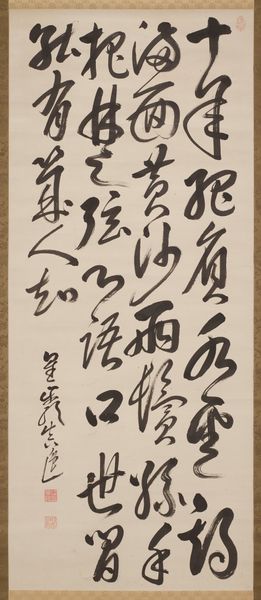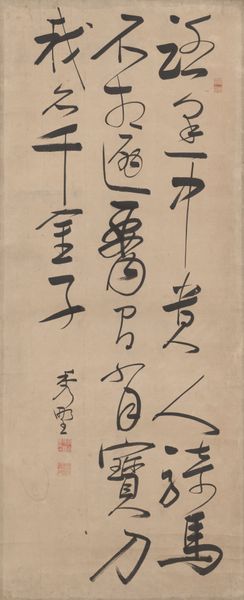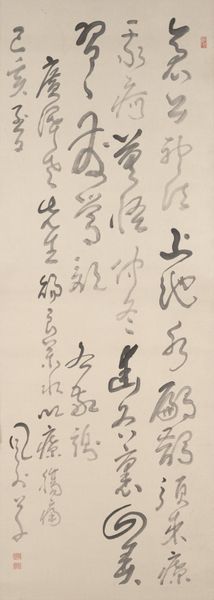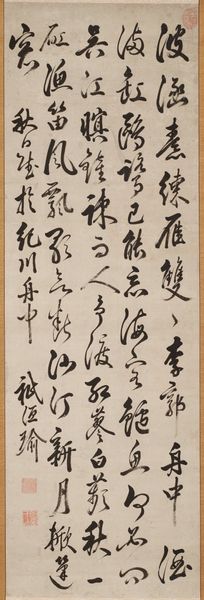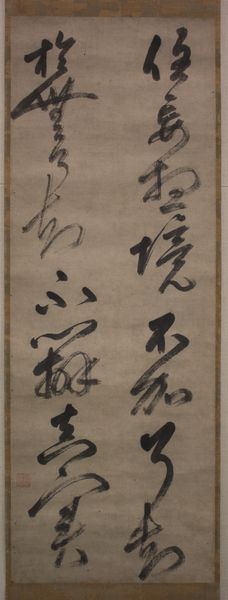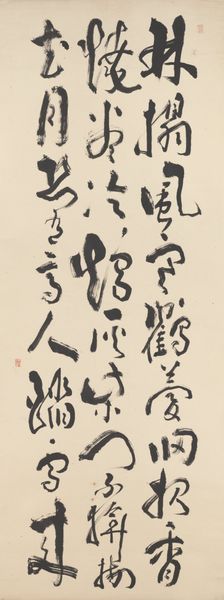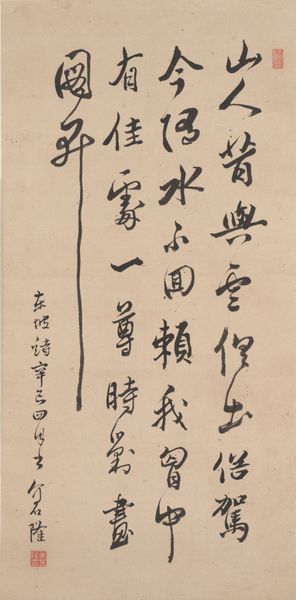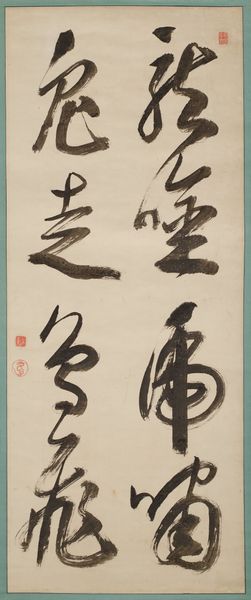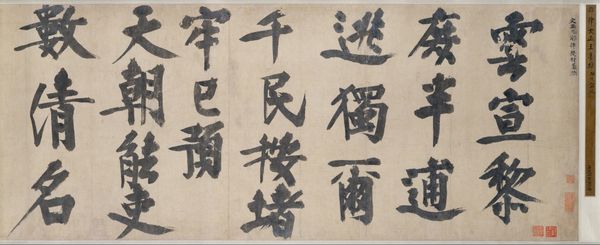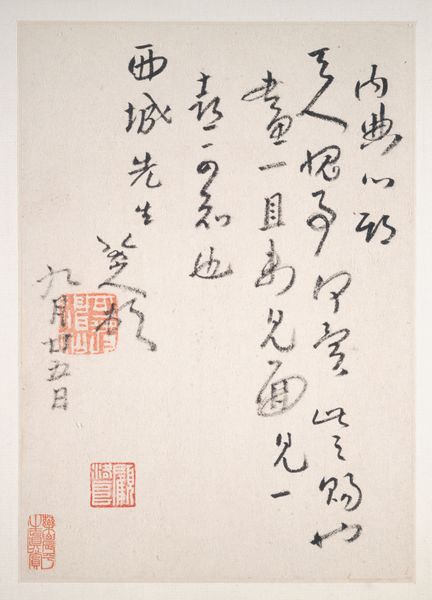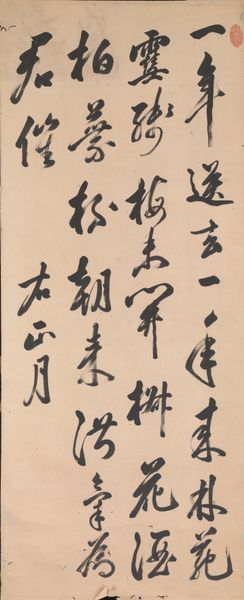
paper, ink
#
calligraphy
#
asian-art
#
japan
#
paper
#
ink
#
calligraphy
Dimensions: 72 15/16 × 20 3/4 in. (185.26 × 52.71 cm) (image)
Copyright: Public Domain
Hattori Nankaku created "Spring and Autumn Quatrains" in the mid-Edo period, a time when Japan was experiencing relative peace and economic growth under the Tokugawa Shogunate, fostering a rich environment for the arts. Nankaku, a Confucian scholar and celebrated calligrapher, channels his intellectual and artistic prowess in this piece. The flowing strokes of the calligraphy embody not just literary expression, but also the emotional and spiritual essence of the poems. Nankaku, deeply influenced by Chinese aesthetics and philosophy, uses the act of writing to express his inner world and engage with ideas of nature, time, and human experience. His work reflects the complex interplay between personal expression and cultural heritage. Consider how the vertical format and dynamic brushstrokes may evoke a sense of intimacy and immediacy, allowing viewers to connect with the artist’s emotions across time. The "Spring and Autumn Quatrains" is thus not only a work of art, but also a deeply personal statement that resonates with the viewer.
Comments
minneapolisinstituteofart about 2 years ago
⋮
Hattori’s poem describes the seasonal festivities of spring and autumn, and makes a number of references to Chinese court culture to create an air of sumptuousness. The references include the “Five-Horse Prefect”—a high ranking official allowed to retain a fleet of horses; Mount Li, where the first Chinese emperor was entombed; and the “pearl studded slippers” worn by the prostitutes of an infamously extravagant lord. The Five-Horse Prefect rides the spring wind, flowers seem to fly,Mount Li in the Second Month, vying in perfumed fragrance!If he should spend the next ten days getting really drunk,No need to ask for friendship from men of cotton clothes!A noble feast among autumn colors, rain densely falling;Amber cups so frozen we simply can’t get drunk.In days of old, we’ve heard of Orchid Terrace ladies, lovely as jade,And now we turn to view pearl slippers, guests numerous as clouds!
Join the conversation
Join millions of artists and users on Artera today and experience the ultimate creative platform.
